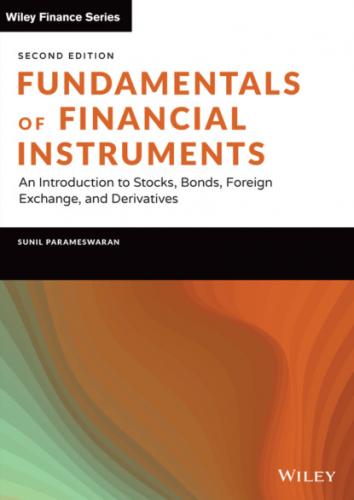CONTINUOUS COMPOUNDING
We know that if a dollar is invested for N periods at a quoted rate of r% per period and if interest is compounded m times per period, then the terminal value is given by the expression
In the limit as
where e = 2.71828. Known as the Euler number or Napier's constant, e is defined by the expression:
This limiting case is referred to as continuous compounding. If r is the nominal annual rate, then the effective annual rate with continuous compounding is er − 1.
EXAMPLE 2.9
Nigel Roberts has deposited $25,000 with Continental Bank for a period of four years at 8% per annum compounded continuously. The terminal balance may be computed as:
Continuous compounding is the limit of the compounding process as we go from annual, to semiannual, on to quarterly, monthly, daily, and even shorter intervals. This can be illustrated with the help of an example.
EXAMPLE 2.10
Sheila Norton has deposited $100 with ING Bank for one year. Let us calculate the account balance at the end of the year for various compounding frequencies. We will assume that the quoted rate in all cases is 10% per annum.
The answers are depicted in Table 2.2. As can be seen, by the time we reach daily compounding, we have almost reached the limiting value.
| Compounding at Various Frequencies | |
|---|---|
| Compounding Interval | Terminal Balance |
| Annual | 110.0000 |
| Semi-annual | 110.2500 |
| Quarterly | 110.3813 |
| Monthly | 110.4713 |
| Daily | 110.5156 |
| Continuously | 110.5171 |
FUTURE VALUE
We have already encountered the concept of future value in our discussion thus far, although we have not invoked the term. What exactly is the meaning of the future value of an investment? When an amount is deposited for a certain time period at a given rate of interest, the amount that is accrued at the end of the designated period of time is called the future value of the original investment.
For instance, if we were to invest $P for N periods at a periodic interest rate of r%, then the future value of the investment is given by
The expression (1 + r)N is the amount to which an investment of $1 will grow at the end of N periods, if it is invested at a rate r. It is called the FVIF (Future Value Interest Factor). It depends only on two variables, namely the periodic interest rate, and the number of periods. The advantage of knowing the FVIF is that we can find the future value of any principal amount, for given values of the interest rate and time period, by simply multiplying the principal by the factor. The process of finding the future value given an initial investment is called compounding.
EXAMPLE 2.11
Shelly Smith has deposited $25,000 for four years in an account that pays interest at the rate of 8% per annum compounded annually. What is the future value of her investment?
The factor in this case is given by
Thus, the future value of the deposit is
Note 3: Remember that the value of N corresponds to the total number of interest conversion periods, in case interest is being compounded more than once per measurement period. Consequently, the interest rate used should be the rate per interest conversion period. The following example will clarify this issue.
EXAMPLE 2.12
Simone Peters has deposited $25,000 for four years in an account that pays a nominal annual interest of 8% per annum with quarterly compounding. What is the future value of her investment?
8% per annum for four years is equivalent to 2% per quarter for 16 quarterly periods. Thus the required factor is FVIF(2,16) and not FVIF(8,4).
Thus the future value of
Note 4: The FVIF is given in the form of tables in most textbooks, for integer values of the interest rate and number of time periods. If, however, either the interest rate or the number of periods is not an integer, then we cannot use such tables and would have to rely on a scientific calculator or a spreadsheet.
PRESENT VALUE
Future value calculations entailed the determination of the terminal value of an initial investment. Sometimes, however, we may seek to do the reverse. That is, we may have a terminal value in mind, and seek to calculate the quantum of the initial investment that will result in the
